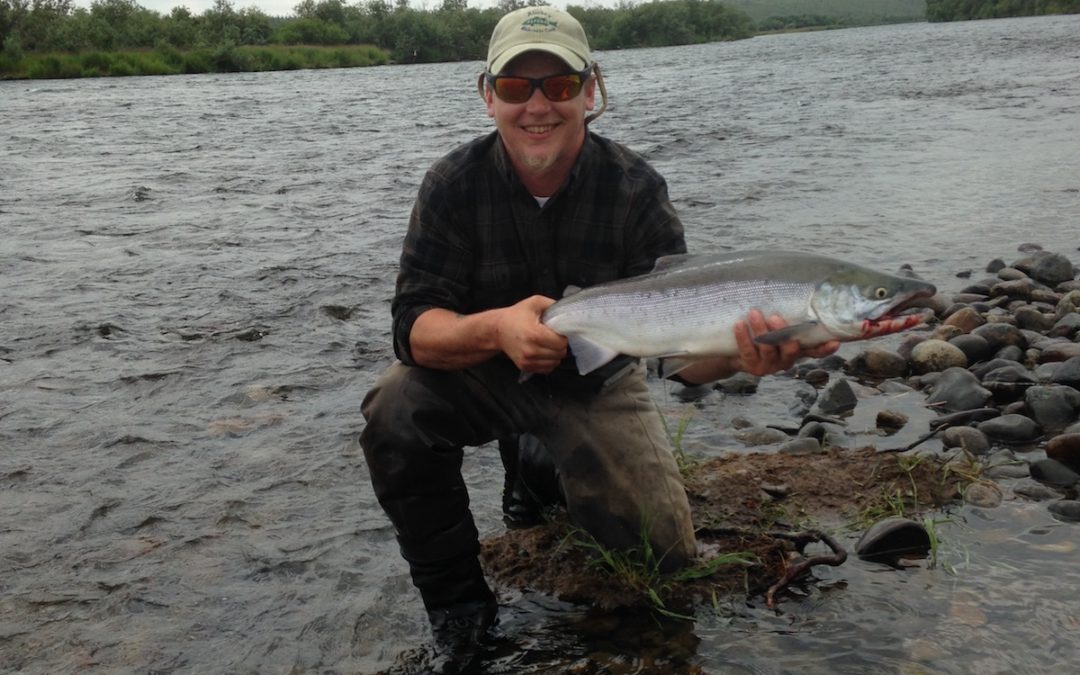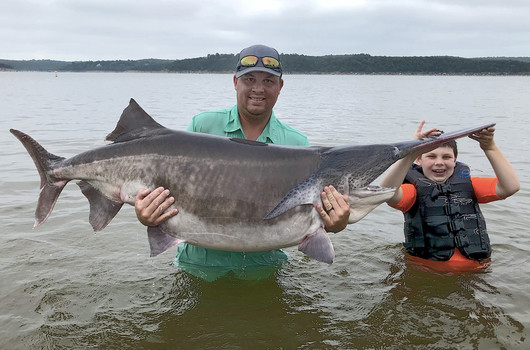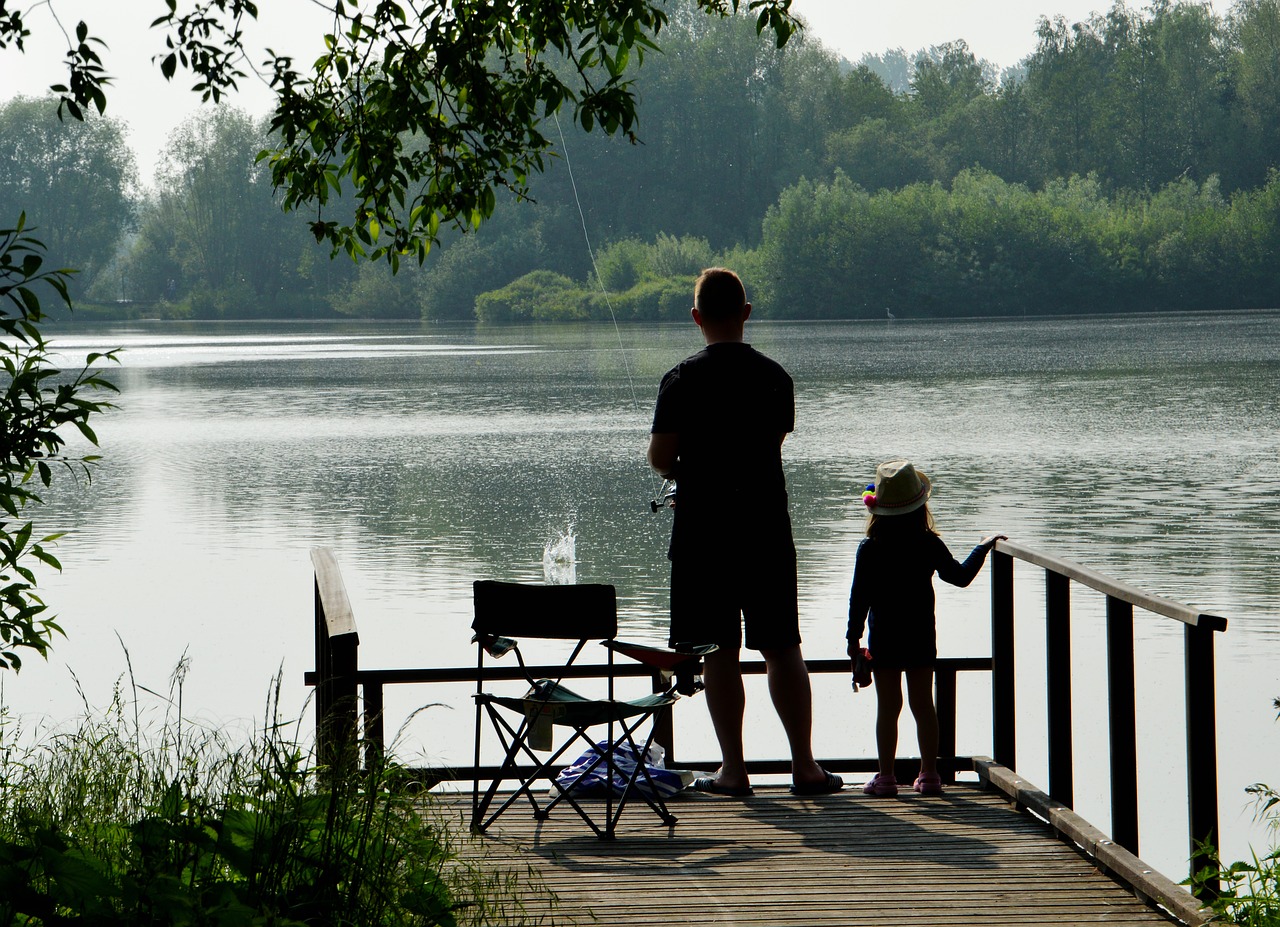I traveled a long way to catch this train. July. New Hampshire to Boston by bus, flights from Boston to Minneapolis, Minneapolis to Anchorage, Anchorage to King Salmon. Then a Branch River Air floatplane ride to a spot on the Alagnak River where our party was met by David Roller, owner of Alaska’s Alagnak Wilderness Camp. A thirty-minute boat ride upriver and we arrived in camp. An hour after lunch I was hooked to a sockeye. This outfit and their guides are that good!
Sockeyes migrate upriver from Bristol Bay to spawn. They sometimes travel in long extended groups that our guides call “trains” – five to ten fish wide and hundreds of feet long. When the train is running, there are strategic shallow areas to fish for them, and on this stretch of the river, David and his team know them all.
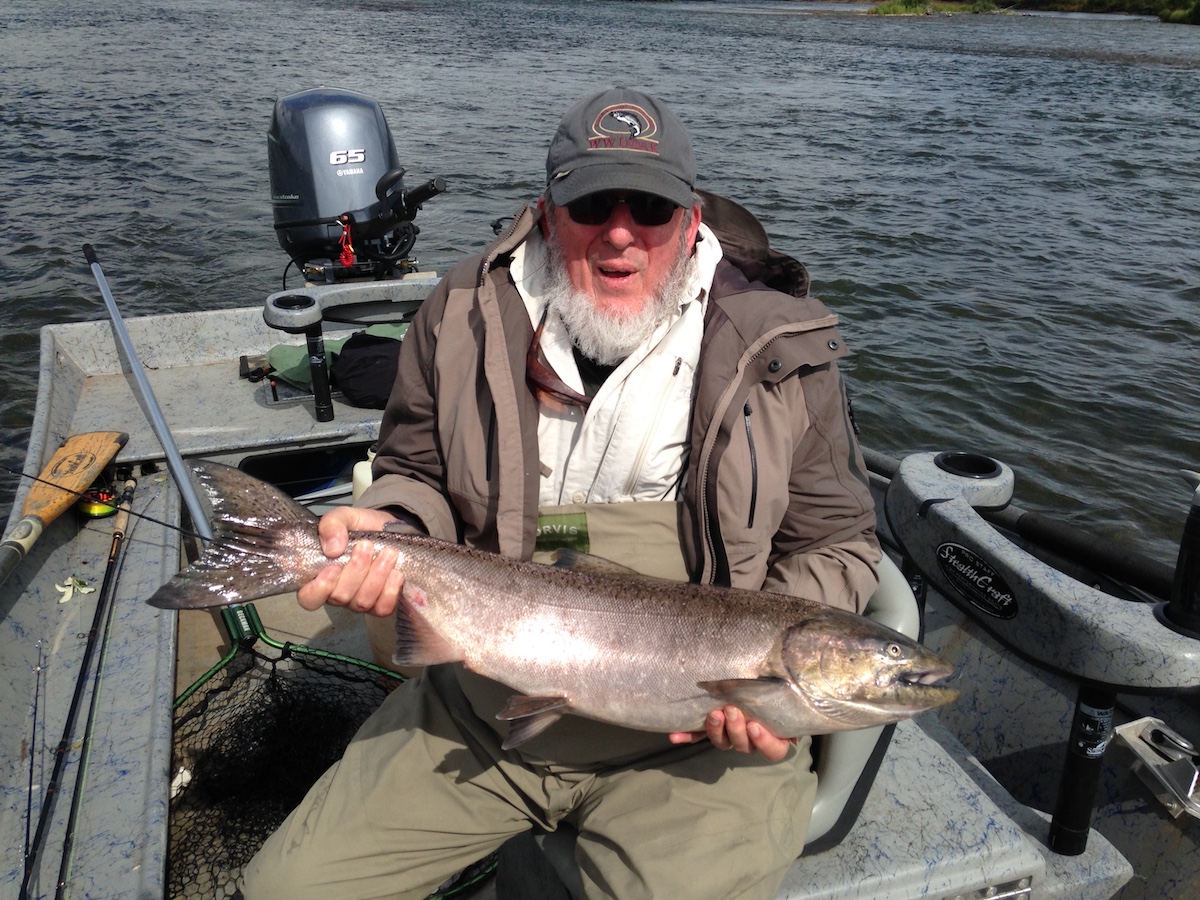
Today our guide, Trevor, had brought my fishing partner, Scott, and me to a small island, where we immediately saw the sockeye train passing in clear water five to ten feet from shore. The train started in a deep staging pool several hundred yards downriver and ran across shallows to get to the foot-deep water alongside our island. We set up folding chairs along the shoreline, saw the salmon just five to ten feet away, and went to work with a light lead weight followed by three feet of leader then a little red wet fly that Scott had tied, then another two feet of leader and another “Scott’s” fly. A short overhead looping motion of a cast and we were fishing.
Our typical day: Rise at 6:30, leave our comfortable two-man Quonset-style quarters for coffee. Have breakfast at 7:00, served by Karen Roller, David’s wife, and Kalisha. At 8:00 Scott and I depart in our boat with a guide. Fish for King Salmon in the morning. Have lunch in the boat at 12:30. Fish for either kings or sockeyes until 5:00 PM. Ashore at 5:30 for a shower followed by drinks and small salmon goodies prepared by Kalisha. Dinner at 7:00. Tired and happy, in bed at 8:30. The next day: Get up and do it again.
This afternoon was not typical. Trevor, Scott and I had gotten on board an exceptional salmon train. For part of the morning and the entire afternoon, we were in constant contact with sockeye either in sight or at the end of our lines. Most of them weighed five to six pounds, but some were heavier.
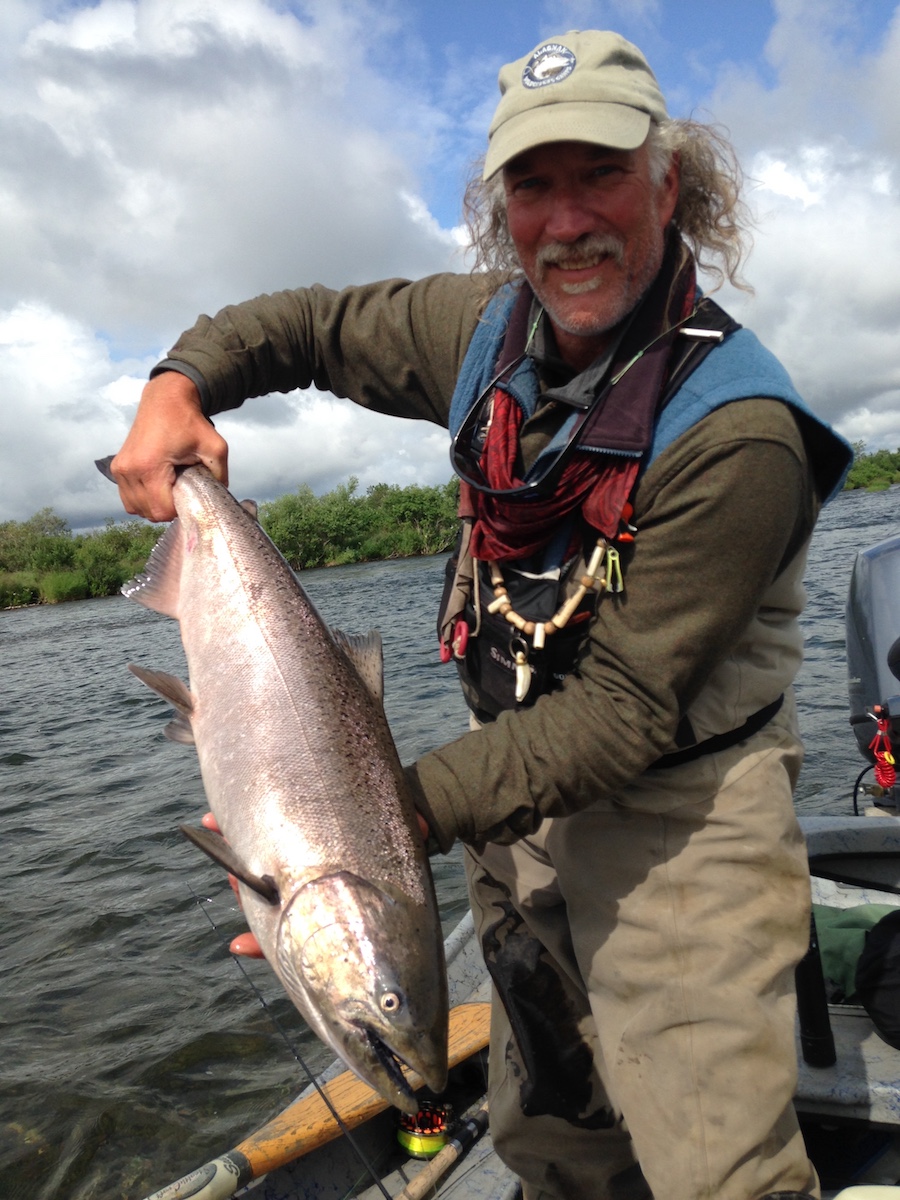
I landed one ten pounder. The air sizzled with the hiss of line leaving the reel at speed, cries of “fish on” rang out, Trevor ran back and forth between us netting and releasing fish. There were several occasions when Scott and I were fighting fish at the same time. Sometimes one sockeye would flip free, sometimes we landed both. I hooked more big fish on a fly rod in that afternoon than I have in the last ten years of Eastern fishing.
Many of my sockeyes threw the hook during the first twenty-five foot surfing run. But if I managed to stay with them until the first leap out of the water, I usually was able to bring them in. That first fast and short run often caught me by surprise and before I could recover, off came the fish. Any hook not set firmly was thrown in that first short run. The line would fly back at me, the fish would jump happily to celebrate its freedom and I’d just shake my head.
Scott and Trevor laughed at times at my colorful language. These were strong, bright, fresh fish, full of fight. A successful hookup, for me lasted five to ten minutes—on a ten-weight rod with twenty pound test. These fish fought! We rewarded those we landed with our admiration and a gentle release. I brought twenty-two sockeyes to the net that afternoon and lost nearly twice as many. Scott, an experienced sockeye fisherman, landed more.
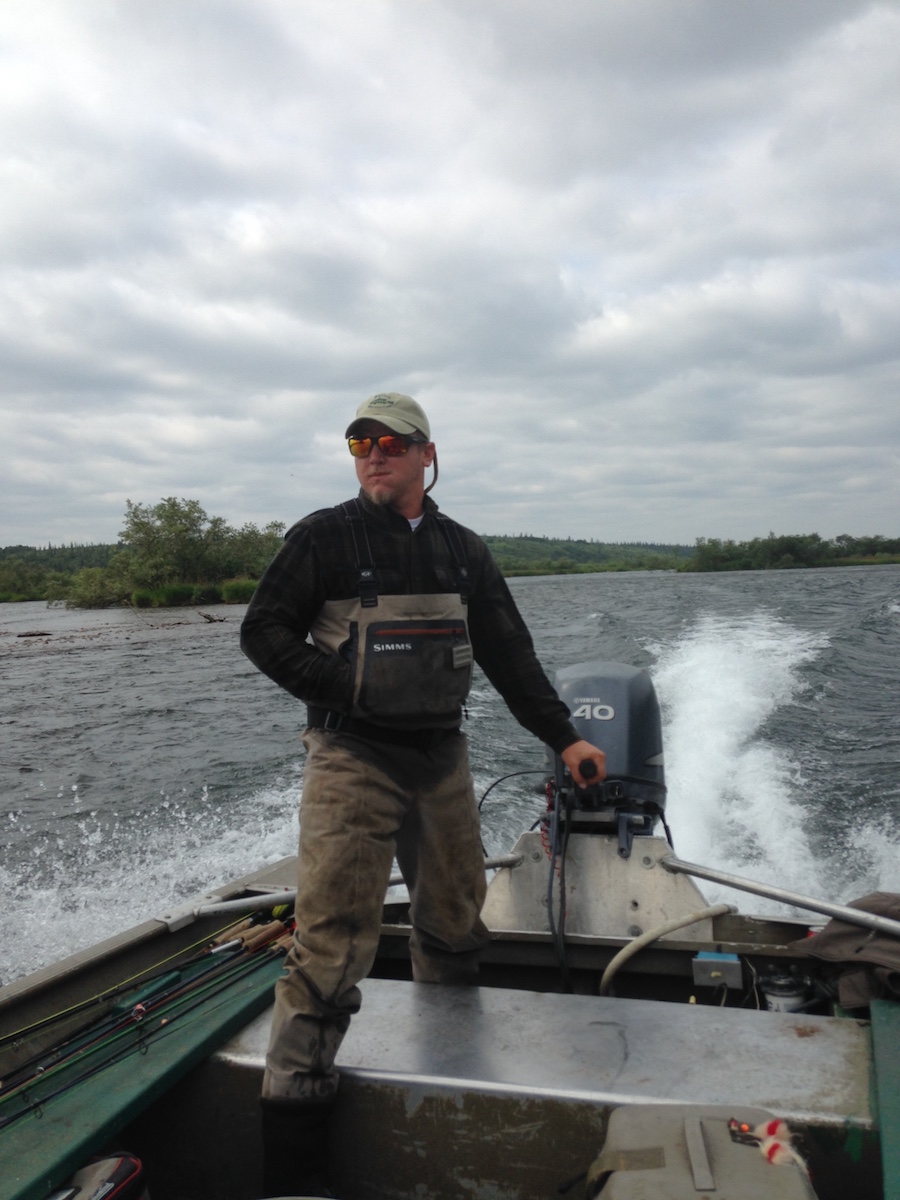
The camp is a family operation. David and Karen Roller are the husband and wife team in charge. David, his son, Crockett, and brother, Kurt, all guide. Karen and Kalisha cook and keep the camp hospitable and orderly. Trevor, a friend of the Roller family from Michigan, is in his first season as an Alaskan guide; a replacement for another son who is on new-father duty back home.
Clients are guided at least one day by each guide.
All of these men got me into fish, big fish, kings and sockeyes. And all of them took very good care of me, an out of shape, overweight, 74-year-old man who was fishing in Alaska for the first time.
But, now, back to that fish, the one that surfed out thirty feet and then took to the air. I saw his size as he rode the surface and then jumped out of the water. This was a very good one, maybe nine or ten pounds; larger than other good fish I’d fought that afternoon. I wanted that fish in the net.
That sockeye ran twenty-five more feet and then jumped again. I heard a whoop from Scott below me and his yell of “Fish on!” I caught a glimpse of Scott’s fish as it left the water. About as large as mine. Two heavy sockeyes being fought within yards of each other.
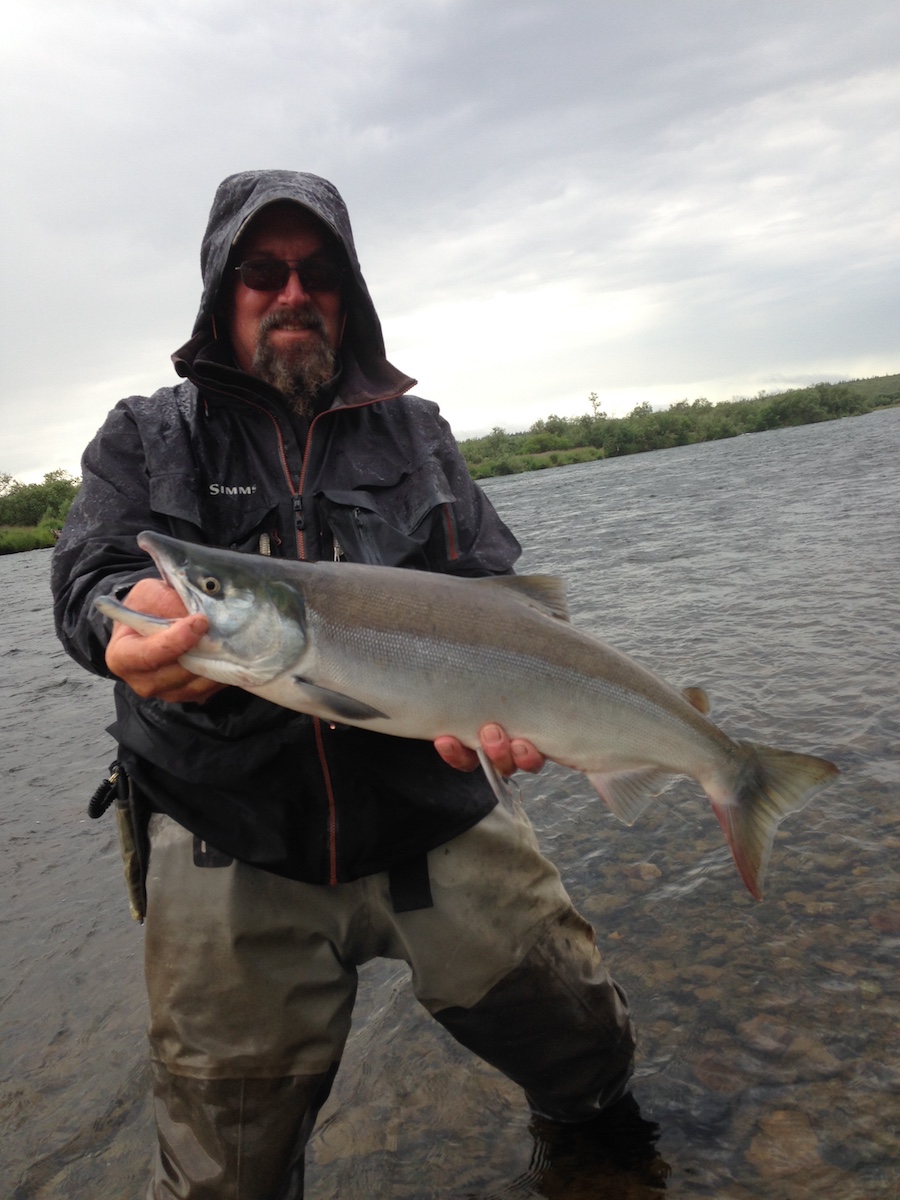
My fish broke right and ran through more line. Out of the water again. A big, bright fish that had been in Bristol Bay yesterday. My rod was jumping and the reel was singing. I tried to get a few feet back and was rewarded by a sharp rap on the knuckles of my forefinger as the salmon objected – strongly. More feet out. I heard a whoop to my left and felt Trevor flash by behind me with his net, heading for Scott. I got a few feet of line back and heard the action on the shoreline as Trevor netted Scott’s fish.
“Come on, Bob,” Scott yelled. “Let’s get ’em both.”
“I’m trying,” I shouted back. “He’s starting to come in a bit.” And then a bit more. I reeled quickly and got back yards of line, but at twenty feet out he saw Trevor’s net, turned and the reel whizzed again in what was to be his last run. Finally, the tired fish was rolling on his side and I reeled him into Trevor’s net. We got him untangled and nursed him in the current. Then, with a flip of the tail, he was gone, back on board the salmon train.

